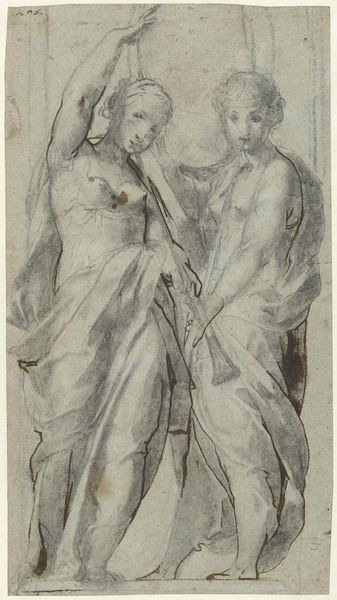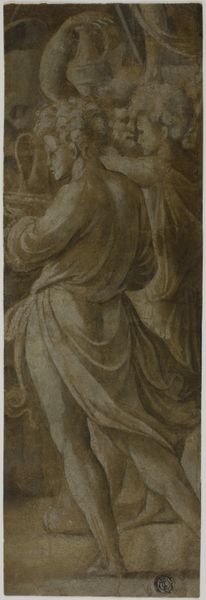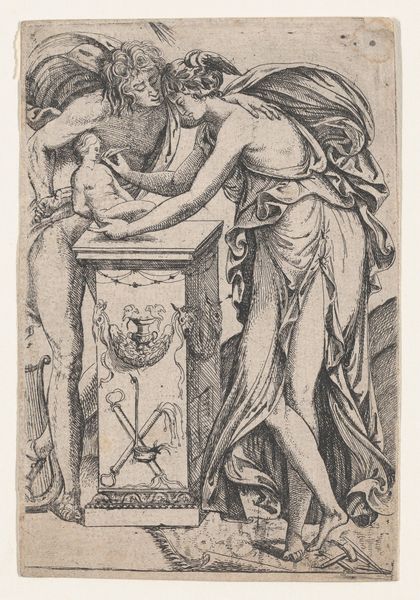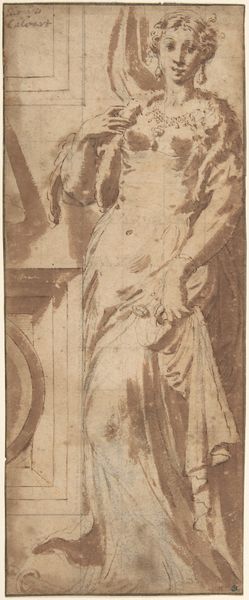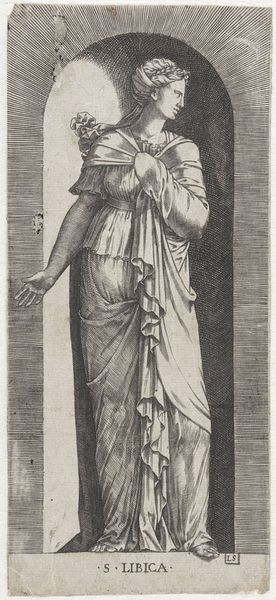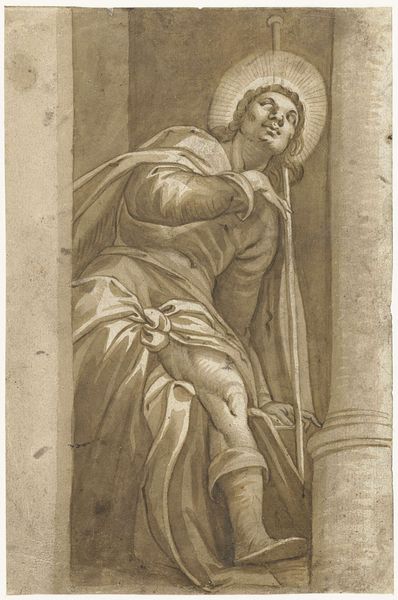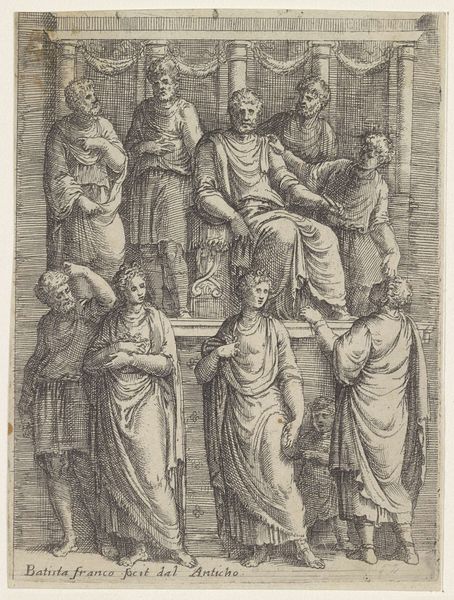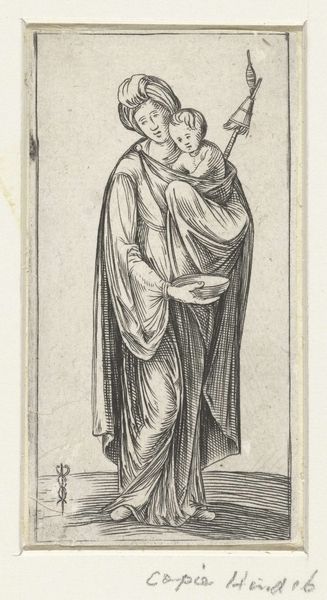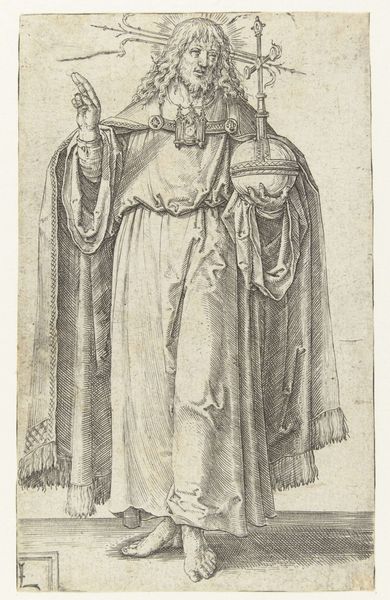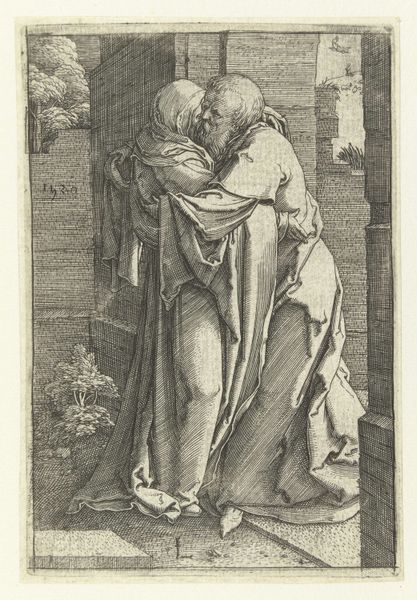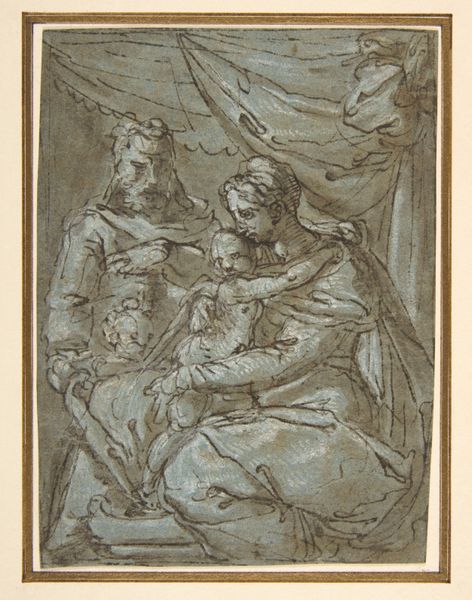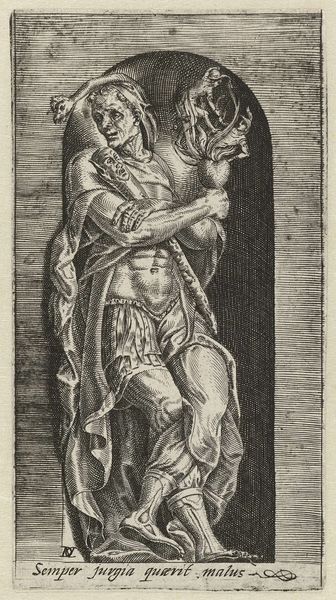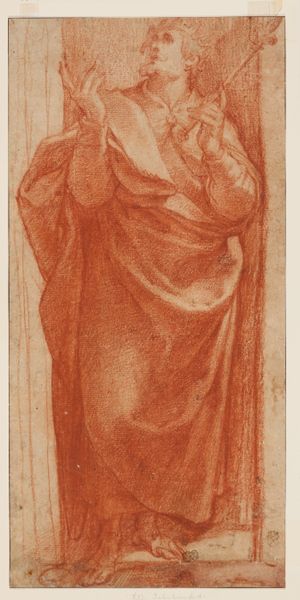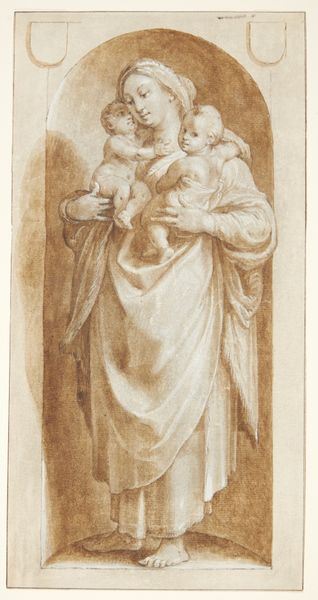
drawing, print, gouache, paper, ink
#
drawing
#
toned paper
# print
#
gouache
#
charcoal drawing
#
possibly oil pastel
#
paper
#
charcoal art
#
oil painting
#
ink
#
coffee painting
#
underpainting
#
water
#
portrait drawing
#
charcoal
#
italy
#
watercolor
Dimensions: 247 × 150 mm
Copyright: Public Domain
Curator: We're standing before Bernardino Campi’s “Two Standing Prisoners in a Niche,” dating back to about 1549 and held here at The Art Institute of Chicago. It’s a striking piece rendered with ink and gouache on toned paper. Editor: My initial impression is one of confinement, but also a strange sort of… monumentality. The way the figures are positioned feels like they're sculptures carved directly into the niche. The use of ink and gouache is so skillfully manipulated to mimic the texture of stone or plaster. Curator: Exactly. And the subject matter is no accident. Campi was active during a turbulent period in Italian history. This work offers a fascinating glimpse into the sociopolitical climate through its depiction of captivity. Who are these prisoners, and what statement is Campi making by immortalizing them in art? Editor: The labor! Think about the process—preparing the paper, mixing the gouache, then applying the ink to achieve such depth. The toned paper especially contributes a warmth which then underscores the coolness of the niche, which heightens the human experience of the two figures here and the sort of isolation being created in that way. Curator: I see what you mean. Their captivity becomes the focal point, emphasizing the fragility of freedom and the consequences of defying societal norms of the period. You can really see that in the gaze of the figure looking back towards the viewer. It's heavy, drawing you in and evoking complex ideas around authority. Editor: Absolutely. And I’m drawn to think, were they complicit in making this a representation of themselves? Consider that Campi used materials available during the time—the gouache likely made with local pigments, the paper perhaps pulped from recycled textiles. These aren’t just strokes of ink but indications of material possibilities within societal constraint, echoing the themes of captivity itself. Curator: That's a compelling point. Campi masterfully uses art as a vehicle for exploring themes of power, marginalization, and, frankly, the very notion of justice within Renaissance society. The level of detail is exquisite! Editor: Definitely a study in contrasts – between constraint and monumentality. I'm struck by how the materiality informs our understanding of these figures and the very social systems represented by this particular making process. Curator: And how their representation continues to evoke emotion in today’s audiences. It makes you wonder, who exactly decides what is imprisoning. Editor: Yes, which in itself becomes its own act of liberation, for sure.
Comments
No comments
Be the first to comment and join the conversation on the ultimate creative platform.
